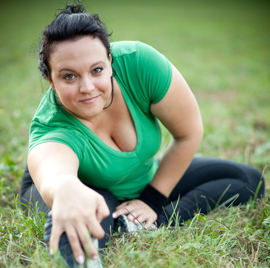
How to ease yourself into an exercise routine after gastric bypass, sleeve gastrectomy or Lap Band in Salt Lake City
Diet and exercise—the two are so frequently spoken about in conjunction that they can seem impossible to separate. After a bariatric surgery like Lap Band in Utah, they never should be. Though your dietary restrictions will make it easier to lose weight, regular workouts will help you keep that weight off long-term. Without exercise, it will be hard (if not impossible) to build a healthy body and fight off weight regain.
However, jumping into an exercise routine too quickly can cause just as many problems. Recovering from weight loss surgery is a process that should not be rushed. You’ll need to follow your weight loss surgeon’s instructions on how to best approach your exercise routine–and this will most certainly mean a slow start.
Adjusting to an exercise routine is simple. You’ll need to take small steps forward every day, gradually improving your fitness as you introduce your body to new challenges. Doing this takes time and patience, but following these steps should help:
- Evaluate your fitness. When you began your journey, your weight loss surgeon likely assessed your overall health and gave you some advice on how to begin adjusting your body to more strenuous activity. This assessment is important, but there are many ways to gauge your fitness on your own. As you start your workout program, take note of how well your body handles certain activities, like how long it takes you to walk a mile and what your pulse rate is before, during and after doing so.
- Think it through. Once you know what your body can handle, it’s time to plan how you’ll put it to the test. Set some reasonable goals and plot out a schedule to reach them. Think about the activities you’d like to try and be sure to include time for your body to recover from each workout.
- Ease in slowly. When you’re just getting started, caution is key—pushing too hard too fast will lead to injury and frustration. Stick to a pace you feel comfortable with in your workouts, always paying close attention to how your body responds—if you feel nausea, pain or dizziness, it’s time to take a breather. Remember to stretch and warm up before each exercise session and take everything in short bursts if you need to. Exercise for five or 10 minutes at a time until you can work up to 30 or 60 minute sessions.
- Add more activity. If you start fitting more physical activity into every aspect of your lifestyle, it will make it easier to continue building your fitness. Every little bit helps. Chores that get you moving like yard work can help you burn a few extra calories each day, while you can also try going on a short walk during your lunch break. To keep yourself interested and work all your body’s muscle groups, you should also vary your workouts—find a few creative ways to get active.
If you’ve never been a regular exerciser, starting a routine after weight loss surgery can be intimidating. Worry not—easing into exercise is a simple process when you take it slow. If you have any doubts or questions about starting an exercise routine, don’t hesitate to ask for your weight loss surgeon’s advice.


